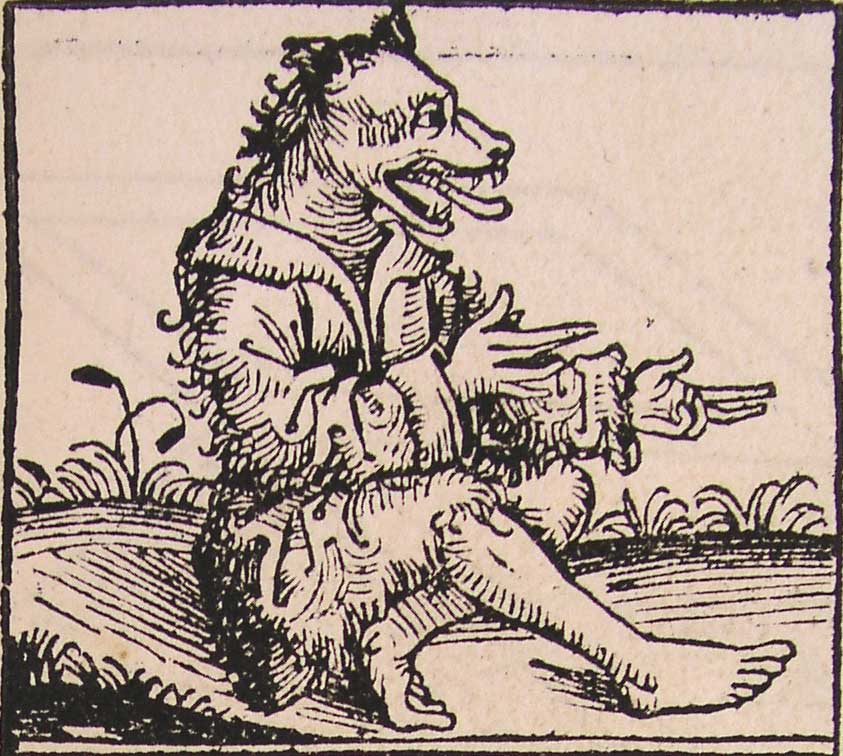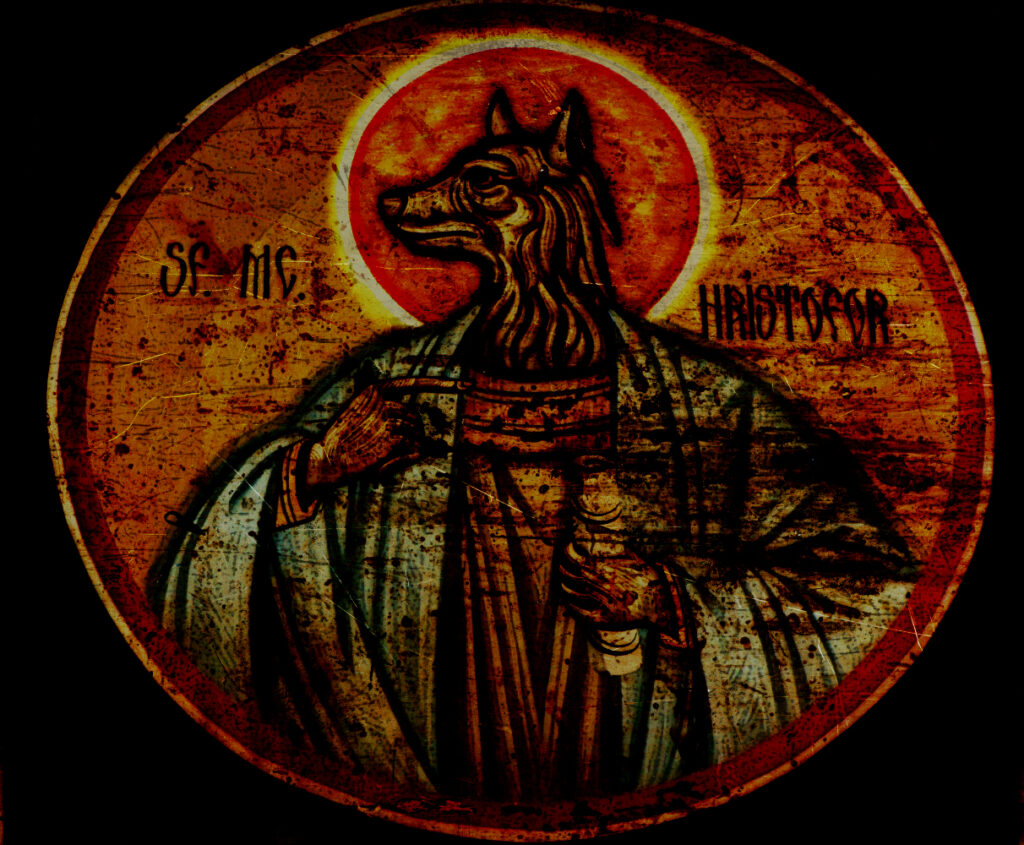Werewolf Fact #75 – Cynocephali (dog-headed men)
This month’s folklore fact is a long-awaited one from over on the Patreon: the cynocephali or “dog-headed men.”

Some depictions of cynocephali (the one above is from the Nuremberg Chronicle, 1493) are mistaken for werewolves fairly frequently; there are several differences of note, including but not limited to the fact that they are otherwise very, very human (normal hands and feet, no tail, etc) and that their ears are not always shaped like a wolf’s/pointing directly upright. They often are, however, so don’t take the ear shape as a surefire thing, either. When in doubt, make sure the depiction is actually meant to be showing a werewolf before using it for, I don’t know, a royalty-free image in your werewolf publication (I’ve seen several). The cynocephali do not shapeshift, nor are they associated with wolves. They have nothing to do with werewolves. Yes, it was just a plot to make you click this link and read about cynocephali.
Cynocephali, or singular cynocephalus, is a term derived from the original Greek word “kynokephaloi,” meaning “dog-headed.” They have other names as well, which mean a range of things such as “dog-faced” and “half-dog.” They were mentioned in assorted accounts and tales of travelers in Africa and India, appearing in sources as old as ancient Greece, and some similar beings can be found in other cultures, such as China. Likewise, depictions of and discussions of such beings continue into the Middle Ages. This same term was later used to refer to baboons, to which no-fun modern day scholars now attribute all cynocephali legends (although we do have at least one Ottoman depiction of a cynocephalus battling a monkey).
There are many quotes across various sources and time periods about these beings, including but not limited to this one from the fifth century BC Greek historian Herodotus, Histories 4. 191. 3 (trans. Godley) [source: Theoi]
“For the eastern region of Libya, which the Nomads inhabit, is low-lying and sandy as far as the Triton river; but the land west of this, where the farmers live, is exceedingly mountainous and wooded and full of wild beasts. In that country are the huge snakes and the lions, and the elephants and bears and asps, the horned asses, the Kunokephaloi (Cynocephali) (Dog-Headed) and the Headless Men that have their eyes in their chests, as the Libyans say, and the wild men and women, besides many other creatures not fabulous.”
Some stories of the cynocephali are also frightfully specific as to how they live, rear livestock, grow fruit, weave baskets, wage war, and much more, even including details of their society, clothing, how long they live, etc. It’s all quite interesting. If you’d like to read more specific quotations, you can find many on one of my favorite websites, Theoi.
Sources seem to dispute one another as to whether they bark, do not bark but only howl, only shriek, or whatever other sounds they may make, and there is also a range of descriptions including elements such as if they have beards and whether hair covers their bodies as well as the dog-head. Overall, probably the majority of sources say they wear the skins of animals as opposed to having fur, but there are those that also call them hairy all over.
Please note that I will not be covering/discussing any gods from ancient Egypt in this post, because despite what some modern day scholars like to discuss, I don’t consider them “cynocephali.” They were wolf-headed deities, not dog-headed (or even jackal-headed), and are overall only related to cynocephali legends by proxy and by modern scholars always putting everything into blasted categories for their next thesis. There were some dog-headed deities in ancient Egypt, and Anubis, Wepwawet, Duamutef, etc, were not among them, and even then, we can’t really assert that the dog-headed deities among the ancient Egyptians are actually related to other legends and records of cynocephali.
With that out of the way, let’s continue…

One of my personal favorite stories involving a dog-headed man is a version of the tale of Saint Christopher, though these depictions and this tale are not seen as canon by churches and has been proscribed in Eastern Orthodoxy (where such depictions were generally most common). Some of these depictions still survive, however. Some sources believe that Byzantine depictions of a dog-headed Christopher come from mistaking “Cananeus” (meaning “Canaanite”) for “caninus,” i.e. canine.
In the story about a dog-headed Saint Christopher, there lives Reprebrus (among other variations of his name; ultimately, they all essentially mean “reprobate”), who is captured by Romans in battle and made to serve among them. Reprebrus was said to be of “enormous size,” with the head of a dog, said to be typical of his kind. He was later baptized and martyred. However, in another version (this one from Germany), Saint Christopher is depicted as a giant cynocephalus who ate human flesh and performed many atrocities. He meets the Christ child later and carries him across a river, as in tradition (the name Christopher means “bearer of Christ”) and repents for his sinful behavior. He is baptized and becomes human, dedicating himself to serving Christianity and became a soldier saint.
There are far more fascinating details in the story than I relayed here in extreme simplicity, but that’s a very simple view (the story is actually very specific about different regions and even the unit in which he served).
Other depictions of cynocephali exist in certain Christian traditions, with Ahrakas and Augani sometimes being depicted with dog heads in Coptic Christian tradition, in the life and legend of Saint Mercurius.

Bestiaries also got pretty wild with the creatures depicted therein, many of which were also mentioned in classical sources (such as the Herodotus quote earlier in this post). The image above is from between 1357 and 1371, in a work called The Voyage and Travels of Sir John Mandeville, or simply Mandeville’s Travels, the memoirs of a man who traveled across the Middle East, India, and even as far as China. Medieval bestiaries also recorded all the same creatures shown here: a monopod or sciapod, a cyclops, a blemmy, and a cynocephalus, each different civilizations of beings said to dwell across the world (and often cited in multiple sources over considerable spans of time, which generally cite the same or similar regions for each civilization, which I’ve always found very interesting).
Mentions of the cynocephali span across centuries, such as in works by scribe Paul the Deacon, a Benedictine monk, and they are even mentioned in the Nowell Codex, a surviving Old English work containing Beowulf (as well as a work of the life of Saint Christopher and Wonders of the East, among others). They are also acknowledged in the works of multiple noteworthy explorers, including but not limited to Marco Polo, Christopher Columbus, Giovanni da Pian del Carpine, Ibn Battuta, and Piri Reis.
With that, I think that’s a decent overview! Hope you enjoyed the post.